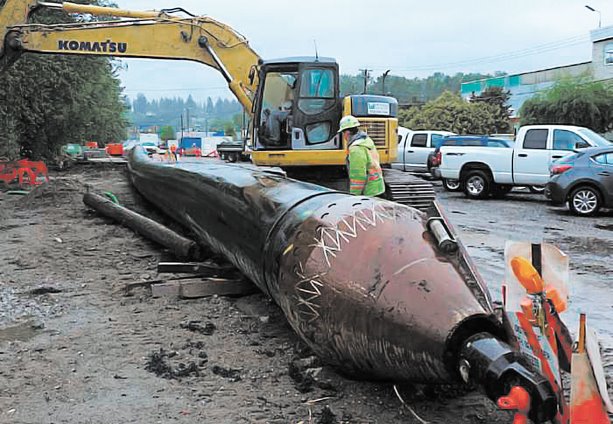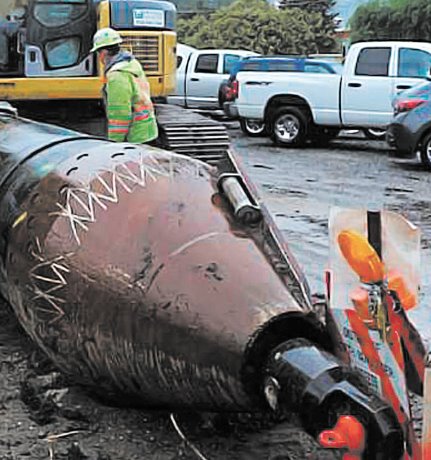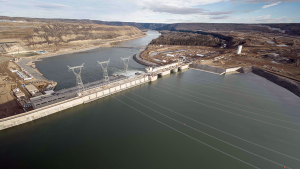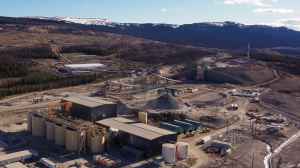Pipe bursting can cut the cost of water and sewer pipe installation by one quarter over open cut methods — yet the technology isn’t always getting a fair shake, says David O’Sullivan, president of PW Trenchless Construction of Surrey, B.C.
Pipe bursting involves ramming a new pipe inside an old one, with cutters slitting and bursting the existing pipe as the new one replaces it. The only excavation involves digging launch pits to insert the new pipe.
However, being one of the few pipe bursting contractors in the B.C. market has its disadvantages.
"Municipalities are reluctant to specify pipe bursting as the preferred construction method if it means they’re only receiving a single bid," O’Sullivan says. "On the other hand, if they offer a performance-based tender, it essentially becomes a design-build project and many municipalities don’t want to go there."
However, the company continues to keep busy with pipe bursting contracts, including a recent high profile project with the Vancouver Shipyards for a large-diameter, 300-metre corrugated steel pipe replacement. The pipe was filled with debris and taking on seawater during high tide due to significant corrosion. The contractor used a Grundoburst Static Pipe Bursting System from TT Technologies to burst a 900-mm diameter corrugated steel pipe, replacing it with a 1,050-mm high-density polyethylene pipe. The project was sub-divided into three 100-metre bursts, with relief pits dug every 25 metres to remove debris.
"Corrugated steel is very difficult to pipe burst because it tends to bunch up ahead of you like an accordion," says O’Sullivan. "There are only three or four trenchless contractors in North America who have ever handled a job of this complexity, with this large a diameter of pipe."
In addition to pipe bursting, PW Trenchless specializes in sliplining — installing a smaller pipe inside a host pipe. It partners with other contractors to offer additional trenchless technologies.
However, BC’s Master Municipal Construction Documents Association (MMCDA), which guides documentation for the province’s municipal infrastructure projects, also includes contract language that tilts the bidding landscape against trenchless.
"For pipe replacement projects, MMCDA documentation specifies backfill methods, leading to an assumption that open-cut is the preferred construction method," says O’Sullivan.
Trenchless bidders can also find themselves at a disadvantage against open-cut bids that involve removing pavement. While open-cut bids will account for the cost of removal and replacement of asphalt paving, they may not account for the full depreciation in the value of the pavement. That’s because many municipalities don’t count asphalt pavement among their infrastructure assets.
"Cured-in-place-pipe lining, directional drilling, sliplining and pipe bursting are all significantly less costly than open cut by straight comparison," O’Sullivan says. "But every time you cut into the asphalt, you depreciate the value of that infrastructure. Even if the damaged road gets patched and repaved, it accelerates the depreciation of the infrastructure asset over its lifecycle."
As part of a trenchless awareness program, the company has recently assisted in the development of a carbon calculator to help determine the total production of greenhouse gases using each trenchless pipe installation method. The calculator was initially developed by the North American Society For Trenchless Technology, but upgraded to cover nine trenchless technologies by the BC chapter of the society in collaboration with PW Trenchless.
"As municipalities become increasingly concerned about their carbon footprint, construction contractors have to look at more carbon-friendly ways of working," says O’Sullivan.
"We’re now in the final stages of working with the government of British Columbia on the acceptance of a protocol allowing cities to claim carbon offset credits for their trenchless construction programs. This would be the world’s first protocol of its kind."

1/2

2/2
Workers from PW Trenchless Construction prepare for a large pipe bursting operation at the Vancouver Shipyards.
Photo: Cam Hutchins










Recent Comments
comments for this post are closed